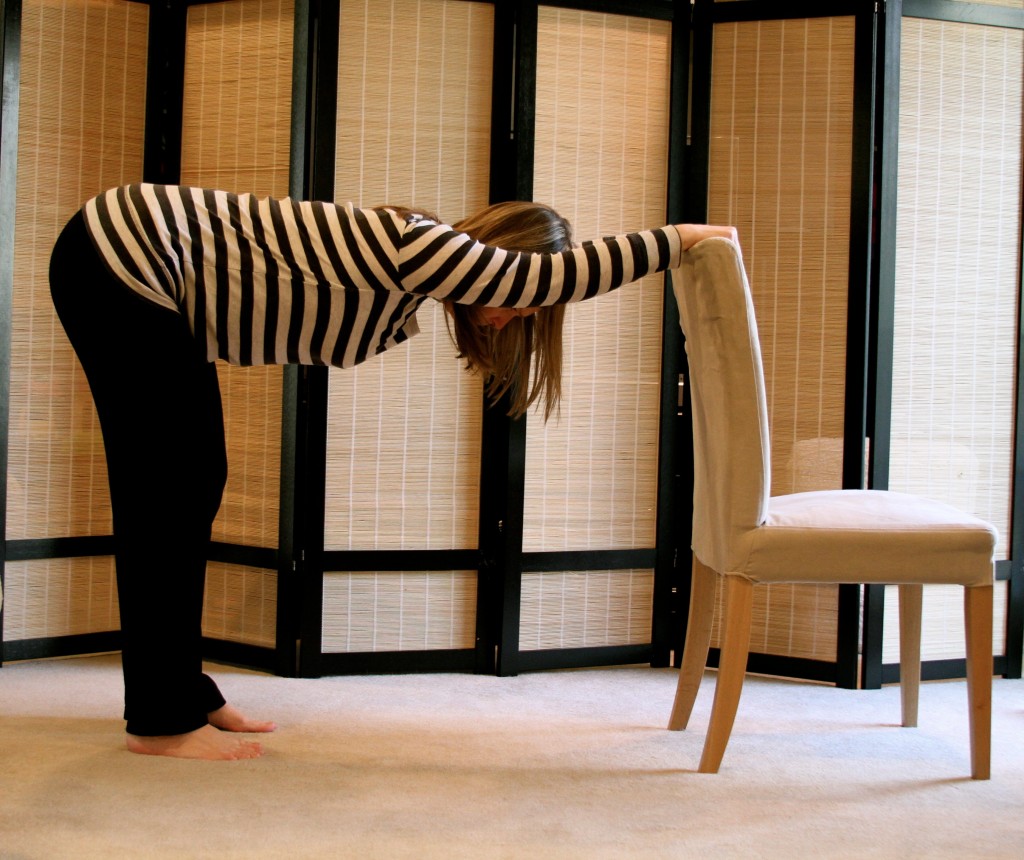We All Have One!
…A pelvic floor. Hopefully the last two weeks we have all (men and women, alike) learned the importance of strong and healthy pelvic floor muscles.
While the side effects of a weak pelvic floor may be different for each gender, the way we go about restoring health to this often neglected muscular group is the same. For variety, I provided a different set of poses for the men than I did the ladies. So, I thought I’d do this summary post to give you a menu of options for strengthening your pelvic floor.
Three to five times a week, choose one pose from each category below. It won’t take longer than five to ten minutes, a few times a week, to restore and/or maintain a healthy pelvic floor.
Lengthen the Back of the Legs
When the muscles at the back of your legs are too tight, they pull your pelvis into a tucked position. This is bad for your back, your breath…and your pelvic floor.
Stretch the calves with one of the following:
- Adho Mukha Svanasana (downward facing dog pose)
- Calf Stretch
- Calf and Foot Stretch (with a block)
Stretch the hamstrings with one of the following:
- Adho Mukha Svanasana (downward facing dog pose)
- Half Dog
- Supta Padangusthasana (reclining big toe pose) – NOTE: Pregnant women should not practice this pose after the first trimester.
Stand on Your Own Two Feet
After you’ve done the work above and lengthened the muscles at the back of your legs check out this post and spend a few minutes standing in with healthy alignment in Tadasana (mountain pose). Pay particular attention to the alignment of your feet and your pelvis.
Then, try check in with your posture several times throughout your day.
You Do Know Squat!
Squatting is greatly underrated in our society. We should all be squatting everyday to ensure our pelvic floor health! (Another NOTE for pregnant mamas – Discontinue the practice of full unsupported squats after 35 weeks. If you have confirmation that your baby is head down, you can enjoy squats seated on a bolster. If your baby is breech, skip all squats until he or she turns or labor begins.)
Pick one of these variations to practice:
- Full Squat
- Utkatasana Variation (chair pose)
(And one last plug for my favorite biomechanical scientist, Katy Bowman, MS, and her wonderful squat preparation program that you should check out to help you begin to safely practice full squats.)
Whether you’re already experiencing some of the symptoms of a weak pelvic floor or you’re looking to prevent them, these poses will help you get and stay healthy for the long run!
I’d love to hear about your experience with these poses or any questions you have about maintaining pelvic floor health in the comments!








